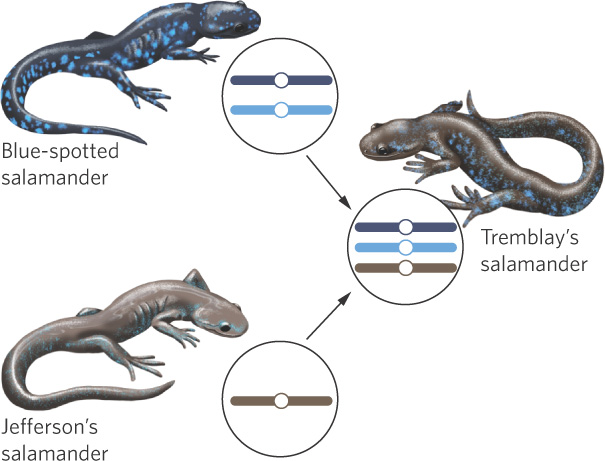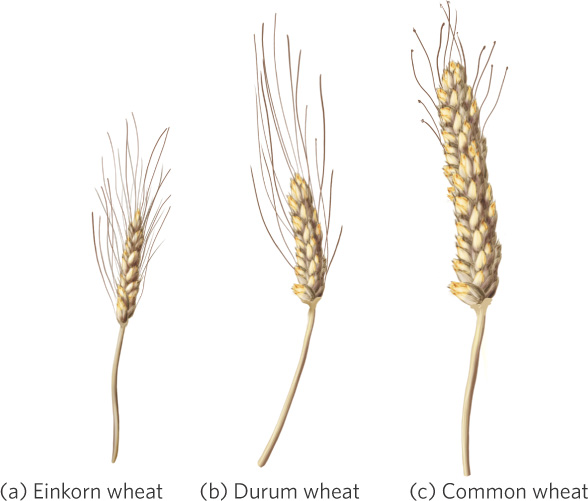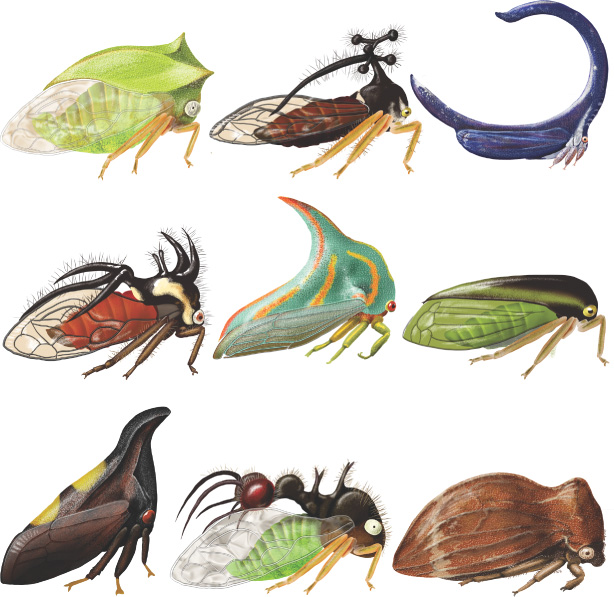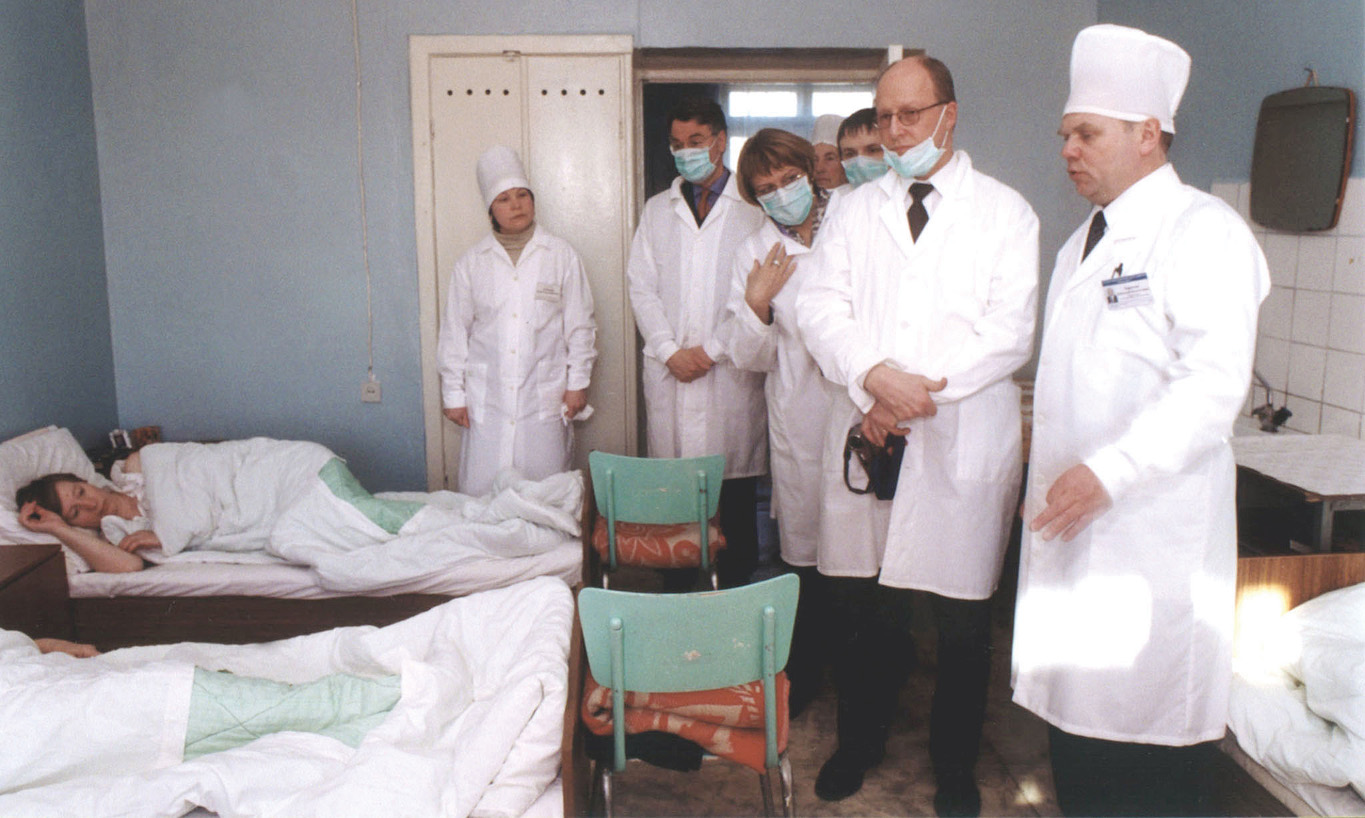Macroevolution operates at the species level and higher levels of taxonomic organization
Macroevolution Evolution at higher levels of organization including species, genera, families, orders, and phyla.
Whereas microevolution is a process that occurs at the level of the population, macroevolution is a process that occurs at higher levels of organization including species, genera, families, orders, and phyla. For our purposes, we will restrict our discussion of macroevolution to the evolution of new species, a process known as speciation. The pattern of speciation over time can be illustrated using phylogenetic trees and speciation can occur in one of two ways: allopatric speciation or sympatric speciation.
Speciation The evolution of new species.
177
Phylogenetic Trees
Phylogenetic trees Hypothesized patterns of relatedness among different groups such as populations, species, or genera.
Scientists can often document microevolution because it can happen in a relatively short time. In some cases, scientists have monitored wild populations over time to track the evolutionary process. In other cases, we have historical documents that trace the development of domesticated plants and animals. For example, most modern dog breeds are the result of artificial selection over the last 3 centuries and records show the older breeds that gave rise to newer breeds. Understanding how macroevolution has occurred, however, is a much more daunting challenge. Because we cannot travel back in time and there are no written records from millions of years ago, the true patterns of evolution can never be known for certain, although fossils can be helpful when examining the evolution of morphological traits. In the absence of more direct evidence, scientists work from the premise that species with the greatest number of traits in common are the most closely related. These traits can include shapes and sizes of structures of living and fossilized organisms as well as the ordering of nitrogenous bases in the DNA of different organisms. To map these relationships, scientists use phylogenetic trees, which are hypothesized patterns of relatedness among different groups such as populations, species, or genera. In essence, phylogenetic trees are attempts to understand the order in which groups evolved from other groups. Figure 7.17 shows a phylogenetic tree for several major groups of vertebrates. From this tree, you can see that all vertebrates share a common ancestor. Over time, this ancestor has given rise to fish, amphibians, mammals, and reptiles (including birds).

178
Allopatric Speciation
Allopatric speciation The evolution of new species through the process of geographic isolation.
Allopatric speciation is the evolution of new species through the process of geographic isolation. Imagine that we start with a single large population of a field mouse, shown as the first stage in Figure 7.18. At some point in time, a portion of the population is separated from the rest. This could occur because some individuals colonize a new island, such as the first finches to arrive in the Galápagos Islands from South America. Alternatively, the population could be divided by a geographic barrier, such as a new river that cuts through the middle of the terrestrial habitat, a rising mountain range that cannot be crossed, or a large lake that becomes two smaller lakes. In each case, the two populations are isolated from each other, as shown in step 2 of the figure. They are no longer able to interbreed because of physical separation, so each population evolves independently. If one or both of the populations has few individuals, founder effects and genetic drift can strongly influence the direction in which that population evolves. When ecological conditions differ in the two isolated locations, natural selection will cause each population to evolve adaptations that improve fitness under local environmental conditions. Over time, as shown in step 5, the populations can become so different that they are no longer capable of interbreeding, even if they are brought back together. At this point the two populations have evolved into different species.

Allopatric speciation is thought to be the most common mechanism of speciation. Figure 7.19 shows the process for Darwin’s finches using a phylogenetic tree. Darwin hypothesized that the ancestor species of the finches he saw probably came from the mainland of South America. Once the ancestral finch species arrived in the Galápagos Islands, the population grew and eventually colonized many of the islands in the archipelago. The isolation and unique ecological conditions present on each island favored the process of allopatric speciation. Researchers hypothesize that these conditions gave rise to some of the 14 currently recognized species of finches in the Galápagos Islands, although other species of finches on the islands appear to have evolved through a different process known as sympatric speciation.

Sympatric Speciation
In contrast to allopatric speciation, sympatric speciation gives rise to new species without geographic isolation. In some cases, species evolve into a diversity of new species within a given location. An example of this is the group of cichlid fish species that live in Lake Tanganyika in eastern Africa. Over millions of years, a single ancestor fish has given rise to more than 200 unique species of fish including insect eaters, fish eaters, and mollusk eaters (Figure 7.20). This massive amount of speciation appears to have been facilitated by the presence of many distinct habitats throughout the lake, such as rocky versus sandy shorelines. This small-scale habitat variation may have favored the evolution of different phenotypes that then led to the evolution of new species.

Sympatric speciation The evolution of new species without geographic isolation.
179
Polyploid A species that contains three or more sets of chromosomes.
A common way that sympatric speciation can occur in some types of organisms is through polyploidy. Polyploid species, which contain three or more sets of chromosomes, arise when homologous chromosomes fail to separate properly during meiosis, with the result that gametes are diploid rather than haploid. If a diploid egg, for example, is fertilized by a haploid sperm, the resulting zygote will contain three sets of chromosomes. At this point, the organism is a polyploid. Because it now has more than two sets of chromosomes, it is unable to breed with any diploid individuals. Thus, when a polyploid is formed, it instantly becomes a species that is genetically distinct from its parents. Several species of insects, snails, and salamanders are polyploid, as are 15 percent of all flowering plant species.
180
An interesting example of polyploidy can be found in a group of salamanders. The blue-spotted salamander (Ambystoma laterale) and the Jefferson salamander (A. jeffersonianum) are both diploid species. As Figure 7.21 illustrates, at some point in the past, a blue-spotted salamander experienced incomplete meiosis and accidentally produced a diploid gamete. It then mated with a Jefferson salamander, which produced a normal haploid gamete. The resulting offspring was a triploid salamander that instantly became a distinct species known as Tremblay’s salamander (A. tremblayi). The Tremblay’s salamander is an all-female species that produces clonal daughters. These salamanders will breed with another salamander species to stimulate their own reproduction, but they can make daughters without incorporating DNA from any of the other species. If they do incorporate the haploid sperm from a male of the other species, their offspring can then carry four sets of chromosomes, which would make them tetraploids.

Plant breeders have developed techniques that cause polyploidy to produce more desirable characteristics in plants. This is a form of artificial selection at the species level. By exposing plants to sudden cold temperatures at the time of reproduction, they can increase the chances of a plant producing gametes that are diploid rather than haploid. Polyploid plants tend to be larger and produce bigger flowers and fruits. Many beautiful flowers you see in a florist shop are the product of human-induced polyploidy. Many crops are also polyploids, including watermelons, bananas, strawberries, and wheat. As you can see in Figure 7.22, plant breeders used a species of wheat that has two sets of chromosomes to develop new species that have four or six chromosomes. The more sets of chromosomes in wheat, the larger the plant and the larger the seeds.

Key Innovations
Sometimes evolution produces unusual traits that prove to be highly useful because they allow the species to exploit new niches and to undergo speciation at a high rate. For example, when the ancestor of bats first evolved wings, it opened up a whole new set of ecological opportunities for these mammals, including the ability to catch flying insects and to collect nectar and pollen from flowers. Today, bats are the second most species-rich order of mammals, after rodents. Similarly, the evolution of C4 and CAM photosynthesis allowed flowering plants to grow in regions with scarce water, as we discussed in Chapter 3.
In 2011, biologists discovered a fundamental connection between horns and wings in insects that represents a key innovation. Entomologists had long marveled at the prominent horn-like structures present in treehopper insects, as shown in Figure 7.23. These horns serve a wide variety of functions including mimicking plant parts—such as twigs and thorns—or mimicking other insects, including aggressive ants. You may remember that insects have a pair of legs on each of the three segments of their thorax. Most insects also have a pair of wings on the second and third segments of their thorax, but not on the first segment. However, fossils indicate that ancient insects commonly had wings on their first segment. The treehopper researchers discovered that the horns of the treehoppers always emerge from the first segment of the thorax, the location where wings emerged in their ancestors. Moreover, when the horn first begins to grow, it starts as two tiny buds, similar to the beginning of wing development, and these buds later fuse to form a horn. Finally, the genes that control the development of wings in the second and third segments are also expressed in the first segment of treehoppers. Collectively, the evidence suggests that treehoppers took advantage of wing genes to develop a key innovation of distinctive horns that serve a wide variety of functions today.

181
In this chapter, we have seen that the products of evolution are all around us, from our favorite breeds of animals to many of the foods that we love to eat. The processes that cause evolution at the population level are the same processes that cause evolution at the species level. Having a good understanding of evolution is not merely an academic exercise; it has real-world implications for helping humans, including in the fight against disease.
ECOLOGY TODAY CONNECTING THE CONCEPTS
DRUG-RESISTANT TUBERCULOSIS

Tuberculosis, or TB, is a highly infectious disease caused by a bacterium (Mycobacterium tuberculosis). TB has killed people for thousands of years. In 2009, for example, researchers discovered that the preserved tissues of a woman who died 2,600 years ago and was mummified have genetic markers of the TB bacterium. Today, experts estimate that nearly one-third of the world’s human population is infected by the bacterium, although the bacterium remains inactive and does not cause any problems for most of these people. However, the bacterium does become active in about 9 million people every year. TB causes extensive tissue damage, weakness, night sweats, and bloody sputum. It is highly contagious; when an infected individual coughs or talks, bacteria are expelled and can survive in the air for several hours and infect other people.
182
Around the world each year, 2 million people die of TB. Fortunately, medical researchers have developed an inexpensive drug to combat tuberculosis. While the drug has been highly effective in reducing the number of people infected with TB, the bacterium has started to evolve resistance to this drug.
Drug-resistant tuberculosis is a rapidly growing problem around the world, particularly in Africa, Russia, and China. The reason is not a mystery. Bacteria can quickly grow to incredibly high numbers and, as you may recall from our discussion of evolution, very large populations are likely to have a substantial number of individuals who possess mutations. Occasionally, a mutation makes a bacterium more resistant. Antibiotics represent a strong selective force that can quickly kill the vast majority of sensitive bacteria, thereby leaving resistant bacteria to flourish.
One of the biggest contributors to the evolution of TB resistance is thought to be the behavior of TB patients. The typical drug treatment of TB requires taking pills daily for 1 year. Although many bacteria are killed early in the treatment, continued treatment helps eliminate every pathogen. Sometimes patients stop taking their pills because they feel better after a few months or they simply lack the money to pay for an entire year of treatment. In either case the most resistant bacteria will still survive in their bodies.
Drug-resistant TB is becoming a major problem. Researchers have developed new types of TB drugs to try to select different TB traits with the hope that evolving resistance to one drug will still make the pathogen susceptible to other drugs. However, there is now an increase in “Multiple Drug Resistant TB” or MDR-TB, a strain of the bacterium that has evolved resistance to several different drugs. In Russia, for example, nearly 20 percent of all people infected with TB are carrying the MDR-TB strain. These strains are much harder for doctors to kill and the medicines required to kill them are 100 times more expensive than the traditional drugs. Even more sobering is the discovery of what is being called “Extensively Drug Resistant TB.” This version of TB has been detected in 45 countries including Russia and currently there are no drugs available to kill it.
The evolution of TB resistance is an excellent example of why we need to understand the process of evolution. Knowing the sources of genetic variation and how selection operates on this variation helps us develop drug treatment programs that are better able to control pathogens without producing strains that have multiple drug resistance.
SOURCES: Altman, L. K. Drug-resistant TB rates soar in former Soviet regions. 2008. New York Times, February 27. http://www.nytimes.com/2008/02/27/health/27tb.html
Goozner, M. 2008. A report from the Russian front in the global fight against drug-resistant tuberculosis. Scientific American, August 25. http://www.scientificamerican.com/article.cfm?id=siberia-drug-resistant-tuberculosis